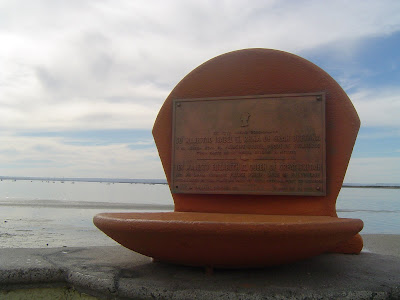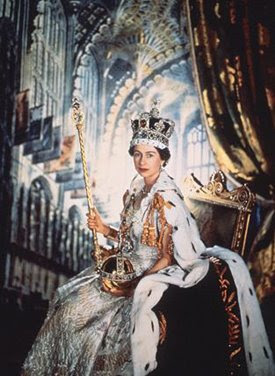Yesterday marked the passing of British Queen Elizabeth...she sat on the throne for 70 years, something never achieved before by any other British Monarch in History (correct me if wrong!).
But even if Monarchs Fall or Rise we have many other elements that seem to remain immutable, such as their Royal Regalia, mainly the Crowns and Scepters.
And this story about a Famous Mexican Natural Pearl is very much linked with Queen Elizabeth!
The original article is written in Spanish and can be read
HERE, but I have translated some snippets for you all

"Queen Elizabeth II has a large collection of jewelry and jewelry, there is one that stands out among all. It is the Crown of St. Edward, which is the main headdress of the coronation of the kings of England and is used by the Archbishop of Canterbury, leader of the Anglican church, to enthrone the monarchs."
The current crown of St. Edward is a circle with eight alternating florons in the shape of a cross and fleur-de-lis, decorated with jewels. The florons lead to a dome topped with a kicked cross. The crown features several jewels, including a row of pearls at the bottom. This tiara weighs about two kilos.
Within the row of pearls stands out one, called the "
Great Lemon", whose origin is the Sea of Cortez, located in Baja California Sur, north of Mexico. It was extracted in 1883 by divers Juan Vacaseque Calderón, and Antonio Cervera, who found it near the island of the Holy Spirit. Its name refers to the size of it, similar to that of a lemon.
The pearl became the property of Antonio Ruffo Santa Cruz, who owned the company that found the pearl. It was Ruffo who later gave it to King Edward VII (1841-1910) to wear in his crown.
Years later, the pearl caught the attention of Queen Elizabeth II, who traveled to Baja California in 1983, aboard the ship Britannia. During his second trip to Mexico she passed through Espiritu Santo and Cerralvo, being able to know the place where the pearl of her crown had been extracted.
Another article details her visit to La Paz and includes some photos of that visit:
This is a Memorial marker placed for the occasion of the visit:
And several other interesting tidbits can be found in this
article.
Farewell Queen Elizabeth!




:quality(85)/cloudfront-us-east-1.images.arcpublishing.com/infobae/IRYSACT3CZEQVJJKL7E4NDZMYA.jpg)
:quality(85)/cloudfront-us-east-1.images.arcpublishing.com/infobae/TIR6YFJYKRGQXLUW5QOMXO7ITU.jpg)

